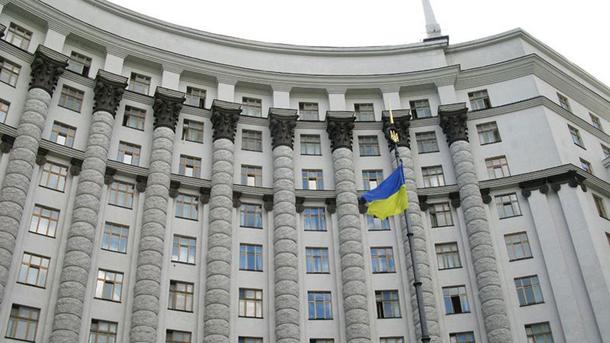
In Ukraine published the draft “Medium-term Plan of priority actions of the government until 2020”.
Developed Cabinet plan should be the basis of medium-term budget planning, annual detailed plans of action of the government, the strategic plans of ministries and other Central bodies of Executive power. It formulates the main goals and priorities of the government.
The main objectives
1. Economic growth should be achieved by increasing exports and investment, tax and customs reform, deregulation, land reform, privatization, reforming the energy sector and maintaining macroeconomic stability through continued fiscal consolidation. It needs to provide new jobs, higher wages and poverty reduction.
Key performance indicators the achievement of this goal by 2020:
- global competitiveness index – TOP-50;
- the proportion of gross fixed capital formation (characterizes the level of investment) to GDP is 23%:
- the Gini coefficient (showing the degree of inequality of income distribution in the country)- not above 35 (on the methodology of the world Bank);
- the ranking of doing business – a TOP-30;
- the world competitiveness ranking the industry 35th place;
- reduction of GDP energy intensity (kg oil equivalent per 1 USD of 2005) to 0.2.
2. Effective management – through the introduction of public administration reform, decentralization and public Finance reform. It aims to high quality public services and public control over public funds.
Key performance indicators for goal achievement are:
- the Government Effectiveness indicator from the World Governance Indicators is higher than 50% countries;
- E-Government Development Index (United Nations E-government Survey) – TOP 40 countriesworld;
- Open Budjet Index (mezhdunarodnyye International Budget Partnership) – TOP 50 countries.
3. The development of human capital, including education reform, health care, and improve provision of state social support, the development of culture and sports. All this is aimed at improving the quality of life, education and productivity growth.
Key performance indicators for goal achievement are:
- human development index – TOP 50;
- mortality – a decrease of 10%;
- the poverty rate (statistics of OECD) – 15%.
4. The rule of law and the fight against corruption through support to the effective functioning of institutions to combat corruption, ensure equal access to justice and effective protection of the rights of ownership.
Key performance indicator achievement of targets in this one case, the corruption perception index (TransparencyInternational) – TOP-50.
5. Security and defence, including protection of sovereignty and territorial integrity of the state, as well as the most important aspects of safety.
Key performance indicators for goal achievement are:
- the share of expenditures on security and defense at least 5% of GDP for the relevant year, on defense at least 3%;
- the reduction of road accidents by 30%;
- maintaining international support for the de-occupation of Donbas and Crimea.
What you need for fulfillment
The government notes that for the successful implementation of the Medium-term plan needed:
- effective leadership in the whole process of the Prime Minister of Ukraine;
- coordination of interaction of the ministries and Central bodies of Executive power;
- the reflection of the Medium-term plan in the annual action plans of the government and ministries;
- the provision of appropriate expert support.
- constant control and monitoring of the process;
- public reporting.
Priorities
Such directions in the 85, we have selected the most important ones
Economic growth. To ensure sustainable development of the state is an important simplification of the tax system, the establishment of simple and transparent rules, which will create favorable conditions for doing business and improve investment climate.
In the first phase (to end 2017) promised:
- the launch of full operation of the electronic service “Electronic office of taxpayer”;
- the negotiations on amending the Convention on avoidance of double taxation with Belgium, France, Spain, Turkey, Switzerland;
- the elimination of the tax police and creation of a new body that will deal with crimes that target the financial interests of the state and local governments;
- continuation of the reorganisation of the SFS;
- maintaining a single database of individual tax consultations posted on the official website of the SFS;
- preparation of a draft schedule of implementation of acts of EU legislation in the field of taxation of excise goods and VAT, taking into account possible economic risks for the implementation of transparent business activities in this area and the beginning of the process of harmonization with the EU.
In the medium term is expected:
- the implementation of the tax law step 13 of the OECD action plan to counter base erosion and profit withdrawal from taxation (introduction of a three-tier structure of transfer pricing documentation);
- the introduction of the single account for paying taxes and fees;
- view the unified reporting for the unified social contribution and tax on income of individuals;
- the launch of universal Declaration of income and expenses of physical persons and tax control with the use of indirect methods to match the income and expenses of citizens.
The average time of customs clearance of goods, min.
2016
2017 plan
2020 plan
Import
120
75
60
Export
60
30
20
Transit
40
15
10
The plan has not forgotten about privatization – planned tender sale Odessa priportovogo plant, “harkovoblenergo”, “Zaporozhyeoblenergo”, “nikolayevoblenergo”, “hmelnitskoblenergo”, “ternopolyoblenergo” and “Centrenergo” in the third quarter of 2017.
The development of competition, small and medium business. Target quantitative indicators:
- the number of employees in SMEs: in 2017, at 6.7 million people, in 2020 – 7.0 million people;
- the share of enterprises operating in markets with a competitive environment: in 2017 – 50% of the total production (sales) in 2020 – 55%;
- – the share of SMEs in value added (cost of production) in 2017 – 60%, in 2020 – 70%;
- savings through competitive procurement procedures – 2017 34 billion UAH in the medium term is 25 billion UAH per year.
Creation of conditions for economic independence. The government recognizes that at the present stage of transformational change, there is no alternative industry and, primarily, its high-tech components with a corresponding expansion of the presence on the markets of developed countries. Large-scale structural changes should be directly related to the solution of existing system problems: high energy and materials intensity, a significant dependence on imports, and technological backwardness.
In the long – term goal is the transition from commodity to high-tech import-dependent export-oriented economic model.
In the medium-term goal is to start the process of restructuring of industry and export, the deepening of diversification of exports.
Goal 2017: the creation of conditions (the adoption of appropriate legislation and the development of new legislative initiatives) to stimulate the implementation of new technologies in the production and promotion of Ukrainian exports with high added value.
The key areas to achieve these goals in 2017-2020 years are the development of industrial production, including defense-industrial complex, expansion of existing and opening of new markets for Ukrainian business.
Target quantitative indicators;
- the average annual growth of industrial production in 2018-2020 at 7.6% in 2017 – 3%;
- the share of high – and createpropertysheetpagew in the structure of gross value added in the economy in 2020 is 8.5%, 2017 of 6.5%;
- the share of engineering products in the structure of industrial production: in 2020 – 15%, in 2017, 8.4%;
- reducing the material intensity of GDP in 2020 to 0.87, in 2017 – to 0,94;
- reduction of energy intensity of GDP in 2020 – up to 0.2, in 2017 – up to 0.3;
- the average annual growth in physical volumes of exports of goods and services in 2018-2020 – 5%, in 2017 – 2%;
- increasing the share of high-tech goods in the export structure: by 2020 to 25% in 2017 and 22%;
- re-equipment of production facilities of state enterprises of the defense industry (the level of 2016) – in 2017 – 15% in 2020 – 90%.
Energy independence. Scheduled to be in 2020 daluv 11% of energy produced from renewable energy sources in the structure of final energy consumption.
Some target quantitative indicators
2014
2015
2017
2018
2019
2020
Uranium concentrate production, t
925,7
1089,2
1221
1406
1501
2480
Production of fuel assemblies, PCs.
import
import
import
import
import
630
Natural gas production, billion cubic meters
20,2
19,9
20,5
22,5
25,2
27,6
Oil production, mln t
2,73
2,46
–
–
–
–
In the governmental document in the row “natural gas Production” mixed up billions and millions of cubic meters, the forecast for oil is no reason
The production of energy from renewable sources
2009
2014
2017
2020
In power generation, GWh
11471
10 164
20678
26000
In heating, Gcal
1433
16654
41390
58500
Effective management. Today, there are not less than 50 government programs, 40 strategies, 60 concepts. The government recognises that the vast majority of them have no effective system of monitoring and evaluating the effectiveness of implementation. Therefore, for the III quarter of 2017, the planned establishment of an effective system of monitoring of execution of strategic planning documents.
The health-care reform. Some results of the introduction of health financing reform is expected including:
2013
2017
2018
2019
2020
The average duration of hospitalization, days
11,8
11,0
10,5
9,5
9,2
The level of hospitalization of patients with cardiovascular diseases (per 1000 population)
39
38
36
33
30
The number of doctors providing primary care on the basis of contracts with the population, people.
0
7 000
10 000
15 000
20 000
Energy efficiency and conservation. Here the main concern is the reduction of consumption in the country of all types of energy. The government has estimated that today the average specific energy consumption in Ukraine is two to three times higher than in developed countries of the European Union (in residential homes 264 kW•h per 1 sq m vs. 90 kWh). If to reach the European target, we can save up to 11.4 billion cubic meters of gas (about 58% of import of Ukraine). Reduction of losses in the residential sector will lead to reduced costs for benefits and subsidies, which in the state budget 2017 allocated huge amount – UAH 49.5 bn.
The government acknowledged that the process of reducing energy consumption, including through thermal modernization of buildings is extremely slow. In particular, in the framework of the State target economic program of energy efficiency and development of sphere of production of energy from renewable energy sources and alternative fuels for 2010 – 2016 participated only 576 ajoah and HBC. It is therefore important not only to continue the program for future years, but also to expand pericenter who will be able to get the state support the implementation of energy efficiency projects through property managers and business entities that have entered into energy service agreements with the owners or managers of apartment buildings.
The development of housing. The document notes that during the years of independence, Ukraine was carried out a global transformation in the residential sector. However, the privatization was conducted without the establishment of an appropriate legal concepts of management in privatized housing. Largely that is why the problem of financing of capital of remontowa. The imperfection of the system of financing of works related to maintenance of housing, and excessive monopolization of its content has led to rapid physical and moral deterioration of buildings.
In the medium term (2020) is expected to achieve effective management of the housing stock and to create a market for housing management.
Pension reform. Target quantitative indicators in the pension field:
- the reduction in the deficit of the Pension Fund budget in 2017 roughly 22.8%;
- recalculation of a pension insurance system for 10.9 million pensioners;
- restoration of differentiation of pension payments of the pensioners;
- reducing by 40% the number of pensioners, whose pension insurance is less than the minimum.
To achieve the first figure have doubts. The Cabinet approved the Pension Fund budget in 2017 income it increased from 257 billion in 2016 to 284 billion the amount of subsidies from the state budget reduced from 145 billion UAH to 142 billion UAH. But keep in mind that the amount of subsidies includes pension payments, which should be financed from the budget (last year it was 63 billion UAH, that 57 billion). So the actual deficit of the Fund was 82 billion, and is expected to 85 billion. So he has grown, not decreased.







